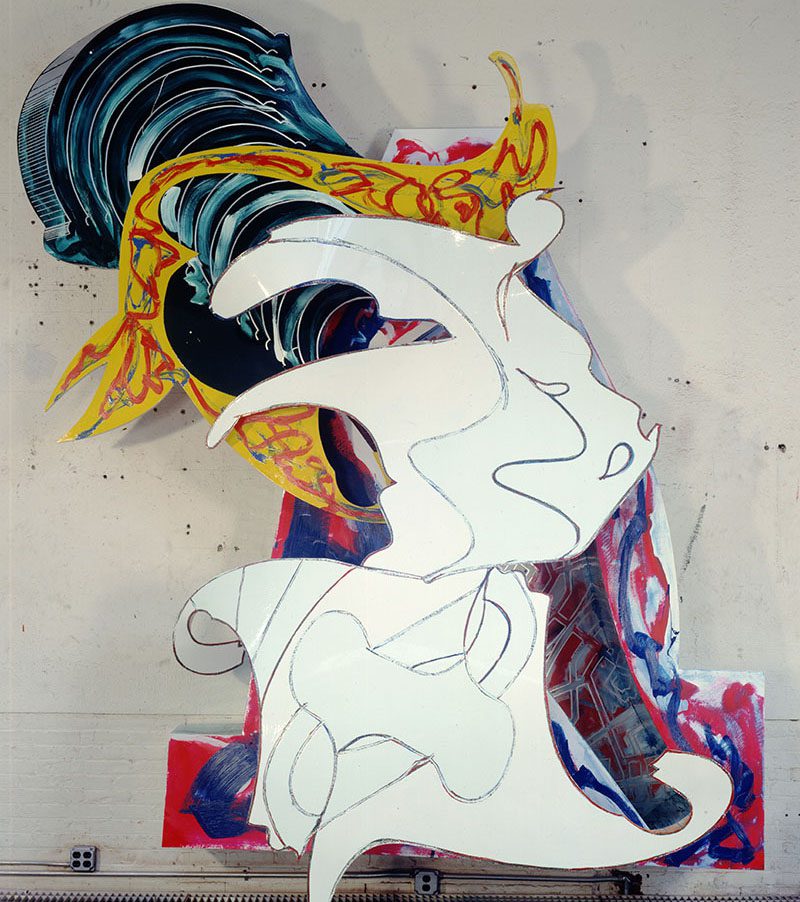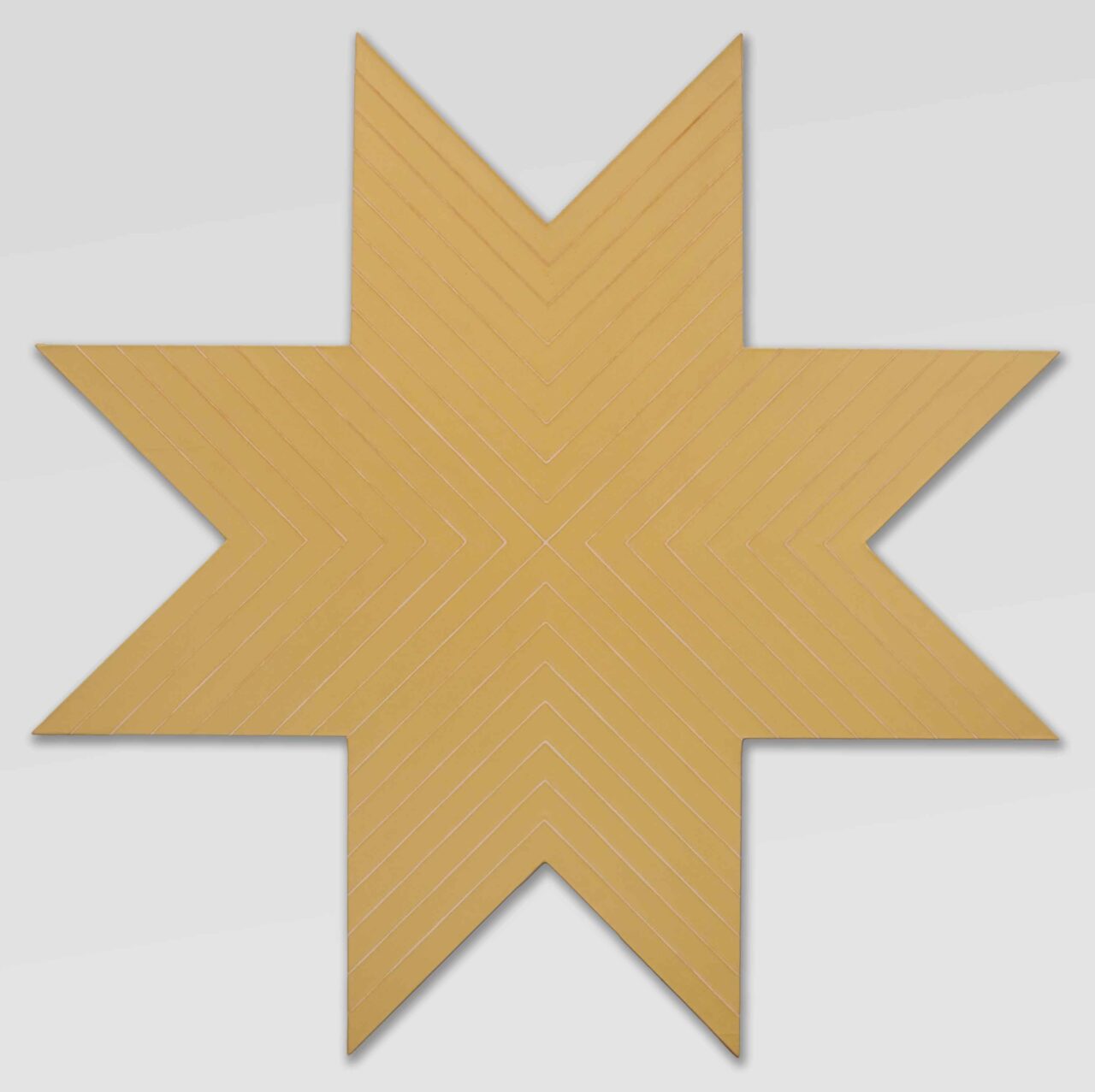ART-TRIBUTE:Frank’s Stella Retrospective at Whitney Museum
 Frank Stella’s third major retrospective in N. York, opens today, at the Whitney Museum of American Art. The entire fifth floor has been taken over by 120 Stella’s large-scale paintings and sculptures, from mid ‘50’s to the present. The retrospective brings together the artist’s best-known works installed alongside lesser known examples to reveal the extraordinary scope and diversity of his nearly sixty-year career.
Frank Stella’s third major retrospective in N. York, opens today, at the Whitney Museum of American Art. The entire fifth floor has been taken over by 120 Stella’s large-scale paintings and sculptures, from mid ‘50’s to the present. The retrospective brings together the artist’s best-known works installed alongside lesser known examples to reveal the extraordinary scope and diversity of his nearly sixty-year career.
By Dimitris Lempesis
Photo: Whitney Museum of American Art Archive
Although the order of the exhibition is chronological, the artist, who has been closely involved in the installation, has juxtaposed works from various periods allowing some rooms to function as medleys. The earliest works in the exhibition are rarely seen early paintings, such as East Broadway, which show Stella’s absorption of Abstract Expressionism and predilections for bold color and all-over compositions that would appear throughout the artist’s career. Stella’s highly acclaimed Black Paintings follow. Their black stripes executed with enamel house paint were a critical step in the transition from Abstract Expressionism to Minimalism. The Black Paintings stark simplicity, impersonal handling of the medium, and use of repeated geometric forms made them enormously influential on the emergence of Minimalism, whose practitioners likewise pursued the viewer’s pure interaction with the art object. With those paintings he achieved almost immediate fame and Dorothy Miller, curator at the Museum of Modern Art in New York, put Stella in the seminal exhibition, Sixteen Americans in 1959-60, just as the legendary art dealer Leo Castelli was readying a solo show at his Upper East Side gallery. The exhibition includes a selection of the artist’s Aluminum and Copper Paintings, further establish Stella’s key role in the development of American Minimalism. Even with his early success, Stella continued to experiment in order to advance the language of abstraction. The exhibition work highlights the artist’s exploration of the relationship between color, structure, and abstract illusionism, beginning with his paintings of the early ‘60s and ‘70s. These were followed by Polygon Paintings, such as Chocorua IV with internally contrasting geometric forms painted in vibrant fluorescent hues, and the Protractor series, to which Harran II, belongs, the work deploys a vivid palette and composition consisting of rectangular shapes superimposed on curving and circular forms, the stripes emphasize the flatness of the composition. The shaped canvas recurs in the works of Stella’s Polish Village series. Each composition is developed from color variations and interlocking geometric forms influenced in part by Russian Constructivism. The work of the mid-1970s and 1980s constitutes yet another form of expressive abstraction and illustrates Stella’s absolute insistence on extending his paintings into the viewer’s space. In the last thirty years, much of Stella’s work has been related in spirit to literature and music. The large-scale painted metallic reliefs in the Moby Dick series, titled after each of the chapters of Melville’s novel, also exemplify Stella’s idea of “working space”. Since the 1990s Stella has explored this concept in increasingly complex two- and three-dimensional works of various materials, such as the large-scale aluminum and steel sculpture Raft of the Medusa (Part I) and the mural-size painting Earthquake in Chile. Extraordinary metal reliefs from his Bali series, as well as the lightweight and dynamic sculpture from his Scarlatti Sonata Kirkpatrick series, represent the later work in the exhibition. In many of these works Stella has used computer generated images and modeling to extend the complexity, layers, and allusions of his material process well beyond traditional media for painting and sculpture. Two of Stella’s recent sculptures, Black Star and Wooden Star I, are installed on the fifth-floor roof terrace.
Info: Frank Stella-A Retrospective, Curators: Michael Auping in association with Adam D. Weinberg & Alice Pratt Brown, with the involvement of Carrie Springer, Whitney Museum of American Art, 99 Gansevoort Street, N. York, Duration: 30/10/15-/2/16, Days & Hours: Mon Wed Thu & Sun 10:30-18:00, Fri-Sat 10:30-22:00, http://whitney.org








